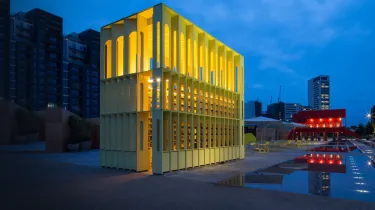
Master Lighting Design

Design Criteria
Topics
- Contemporary Design Theory and Practice
- Design Criteria for Architectural Lighting
- Light Perception
- Light and Colour
- Light and Space
- Physics of Daylight and Artificial Light
Contents
Students will become familiar with the historical background of architectural lighting and contemporary influences on design. Criteria for successful designs will be developed and contrasted with related areas like event lighting. Fundamentals of visual perception and consequences for architectural lighting will be presented. The visual process will also be studied in order to develop a standardised system for light and colour. Metrics for the physical properties of light and luminaires and the relationships between light, colour and space, which are important for architectural lighting design, will be studied. An appreciation for the physical differences between daylight and artificial light will be gained besides the importance of these sources in influencing the interpretation of architecture. Finally, a comprehensive overview of the technical and visual properties of lamp types will be demonstrated.
Objectives
- Articulate the important characteristics of architectural lighting including evaluating lighting systems using architecturally relevant criteria
- Understand the differences between the physical properties of light and the effects of human perception
- Familiarity with the vocabulary describing the physical properties of lighting systems as well as the recommendations and regulations concerning appropriate designs
- Describe the qualitative and quantitative differences between daylight and artificial light including effects on architecture during the day and night
Responsible expert
Harald Hofmann
harald.hofmann@wings.hs-wismar.de
Yvonne Weiss
yvonne.weiss@wings.hs-wismar.de